This was published 4 years ago
Amsterdam, The Netherlands: Book ahead to visit the new Anne Frank House
By Shaney Hudson
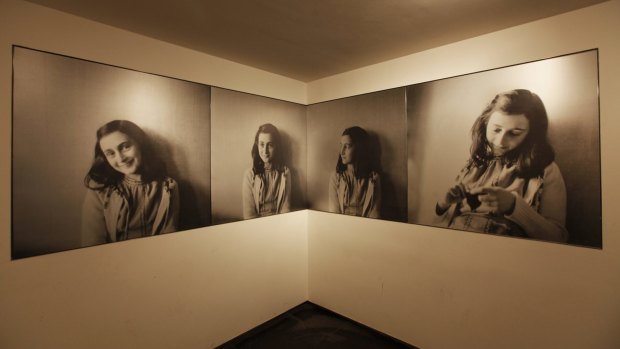
Portraits of Anne Frank in the introduction room.Credit: Anne Frank House
Wait long enough, and you'll see just how unremarkable it is: just another quiet canal house with the shutters drawn, the window sills a little bit warped, seemingly the same as any other in Amsterdam. Plenty go looking for it, many travel here to see it, but when they get here, most visitors walk right on past, not knowing what's inside Prinsengracht 263: and that's exactly what made it such a fantastic hiding place.
Of course, the moment someone stops to take a picture in front of Anne Frank House, the penny drops and the crowd swells. Over the past six decades Anne Frank House has experienced incredible popularity, but struggled with the physical space needed to tell its story.
And as far as stories go, it's a intriguing one. Before World War II, Prinsengracht 263 was a warehouse selling pectin, an ingredient for jam. But during the Nazi occupation of Holland, a secret annexe at the back of the elongated canal house, provided sanctuary for eight Jews concealed inside.
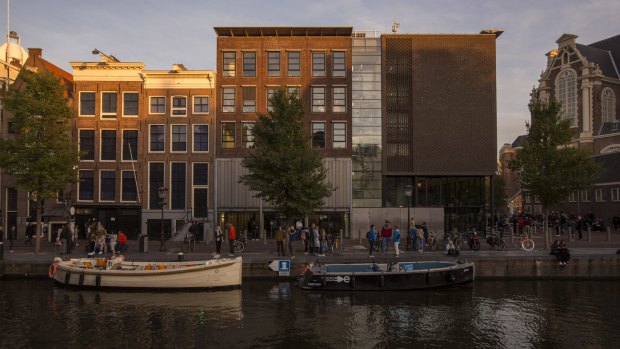
Anne Frank House, Amsterdam. Credit: Anne Frank House
Aided by three workers for just under two years, their subsequent discovery would have made them just another statistic were it not for the diary kept by teenager Anne Frank. Published posthumously by her father Otto as The Diary of a Young Girl, the book's youthful innocence and optimism resonated with a post-war readership. As its popularity grew, the factory where the family hid became a pilgrimage point, and after being saved from demolition by community action, Anne Frank House opened to the public in 1960.
However, a two-year renewal process completed in November 2018 has significantly changed the visitor experience. The acquisition of a student apartments on Westermarkt Square has greatly expanded the footprint of the museum, with more room for visitor facilities and an expanded exhibition space. The entrance has also been moved from Prinsengracht, around the corner to Westermarkt Square, where visitors previously exited through a ground-floor gift shop. It's a much-needed change that lessens pedestrian chaos on a busy road.
All entry tickets are now sold online: 80 per cent of tickets go on sale two months in advance for specific timeslots, while the final ticket allocation is released online at 9am for timed, same-day entry. It's a preferable system to waiting in the wind, rain and, occasionally, snow. But unprepared, it took me three days to secure tickets from the same-day allocation in the shoulder month of June. Most timeslots sell out weeks in advance, and despite all ticketing information available online, there are still plenty of walk-ins turned away disappointed at the door.
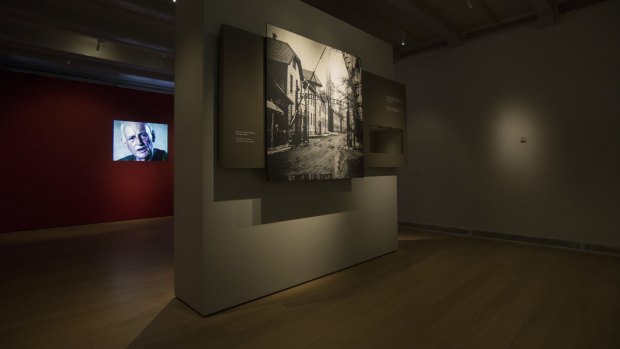
The attic.Credit: Anne Frank House
The museum has also introduced an optional 30-minute Introductory Program focusing on the history of Anne Frank in the context of the World War II. It's a stripped back yet thorough introduction. Our presenter, Graziella begins by covering the rise of anti-Semitism in Europe and how the Frank family fled to Holland from Germany, in the hope that Holland would stay neutral as it had in World War I. She tells how Otto Frank began preparations to safeguard the family by going into hiding.
It is a largely verbal presentation – a timeline is printed on the wall and a series of images illustrate the bombing of Rotterdam, the capitulation of The Netherlands and the growing restrictions as German troops took over. Unexpected details add depth to the visit. Anne wrote about her mother with deep impatience, but Graziella points out Edith's intense homesickness and fear, recorded in letters to her former neighbours; and how the death of Anne's grandmother increased the tension in the Frank house. In the 30 minutes we also learn how the famous diary came to be published, and how Anne used different pseudonyms to protect the seven other occupants of the house.
Graziella's talk finishes with a final message. "Even though this is the most famous story, it's one of many stories that could be told."
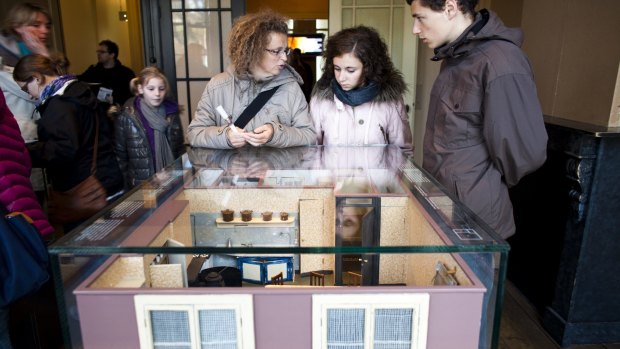
Visitors look at scale models of the secret annex.Credit: Anne Frank House
Offered once an hour, the introductory program is frequently booked out. However, an audio guide available in nine languages is a good substitute and provides context for the displays.
The tour begins at the back of the warehouse with notable changes. A glass wall shows the large internal courtyard previously hidden from street view and the second floor offices have been emptied of furniture, creating more space. The change allows greater emphasis on smaller artefacts such as the letter Anne's older sister Margot received in 1942 calling her to report for labour camp and which prompted the family to go into hiding.
The heart of the house, the Secret Annexe, is unchanged. As per Otto's wishes (he was the only member of his family to survive the Holocaust) it remains empty and the audio guide is muted once visitors pass the swinging bookcase and climb the stairs to the Annexe. The walls are thin, the floorboards creak, and no one speaks. There are pencil marks on the wall that show how Anne and Margot grew taller. Anne's posters of movie stars and a cockatoo are glued to the wall, faded with time. The marble bench where they prepared food is bare, the windows blackened and closed. It's hard not to hold your breath. This is an overwhelming place to visit and for many a sacred one.
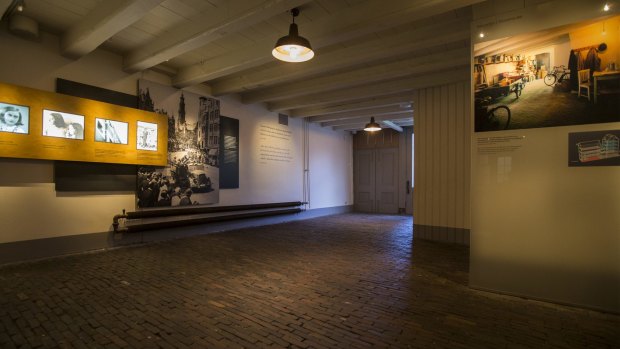
Anne Frank House.
The feeling is compounded when you leave the Annexe and move into a an attic space where film of a prisoner transport train is projected on the wall. Swallowing the room, it is a jarring experience, with visitors having to walk through the projection of Anne's fate to continue forward. If there is any doubt of the impact of visiting Anne Frank House, you just need to read the room. A man in his 20s gets to the bottom of the stairs in the diary room and has to sit down, his arms gathered around his knees, quietly sobbing.
With more floor space, a significant addition to Anne Frank House is the expanded diary room, where Anne's original diaries are displayed in glass cases. In addition to this are samples of her fiction work.The display reveals that the published diary was not just one book, but many revised drafts. When Anne and the six other occupants of the house were discovered in August 1944, she was in the process of revising her diary into a book that could be published after the war had ended. It was a project that gave Anne focus in the final weeks before their discovery.
Importantly, the new display allows visitors to compare her original words with the revised text. The diary is turned to a passage from December 22, 1943, next to a revised version from the same date. Projected on to the wall above is a poignant quote: "I'll make my voice heard, I'll go out into the world and work for mankind".
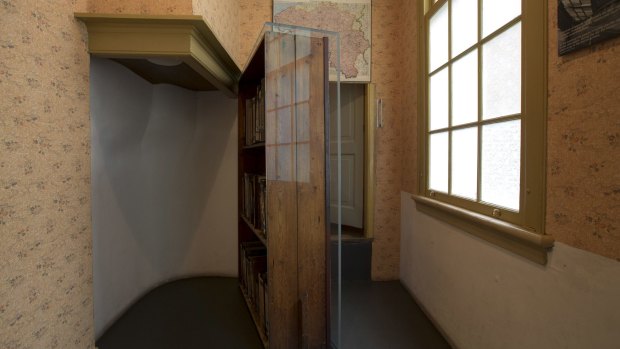
Entrance to the secret annex.Credit: Anne Frank House
The world listened. But as I leave the house and sit by the canals taking in the experience, I can't help but wonder what she'd make of our world today. The existence and expansion of Anne Frank House – and her message – has never seemed more urgent.
FIVE MORE WAYS TO EXPERIENCE ANNE FRANK'S AMSTERDAM
MERWEDEPLEIN 37-2
Before they went into hiding, the Frank family lived at Merwedeplein 37. It is closed to the public, but has a small commemorative plaque.
JEWISH CULTURAL QUARTER
Amsterdam's Jewish Cultural Quarter includes the Jewish History Museum, Portuguese Synagogue, the Hollandsche Schouwburg and the National Holocaust Museum. See jck.nl/en
DUTCH RESISTANCE MUSEUM
Highly recommended, the Dutch Resistance Museum explores how Dutch citizens fought back against the Nazi occupation. See verzetsmuseum.org
WESTERTOREN
A constant companion during Anne's time in the Secret Annexe, the bells of the Westertoren overlook Anne Frank House and offer panoramic views. See westertorenamsterdam.nl
WESTERBORK
After being discovered, Anne was sent to Westerbork, an internment camp two hours' drive from Amsterdam. Today, there is an excellent museum and memorial. See kampwesterbork.nl
TRIP NOTES
Shaney Hudson was a guest of Anne Frank House and travelled to Amsterdam at her own expense.
VISIT
Anne Frank House is open 364 days a year (closed for Yom Kippur), 9am-10pm from April to October, 9am to 7pm November to March; tickets €10.50 for adults, €5.50 for children aged 9-17 , € .50 for children under 9. Book ahead for tickets which are available online only and entry is allowed for the time allocated. Same-day allocation tickets go on sale at 9am. Despite the museum's renovation, accessibility is limited however, it offers those with limited mobility virtual reality glasses. See annefrank.org
Sign up for the Traveller Deals newsletter
Get exclusive travel deals delivered straight to your inbox. Sign up now.